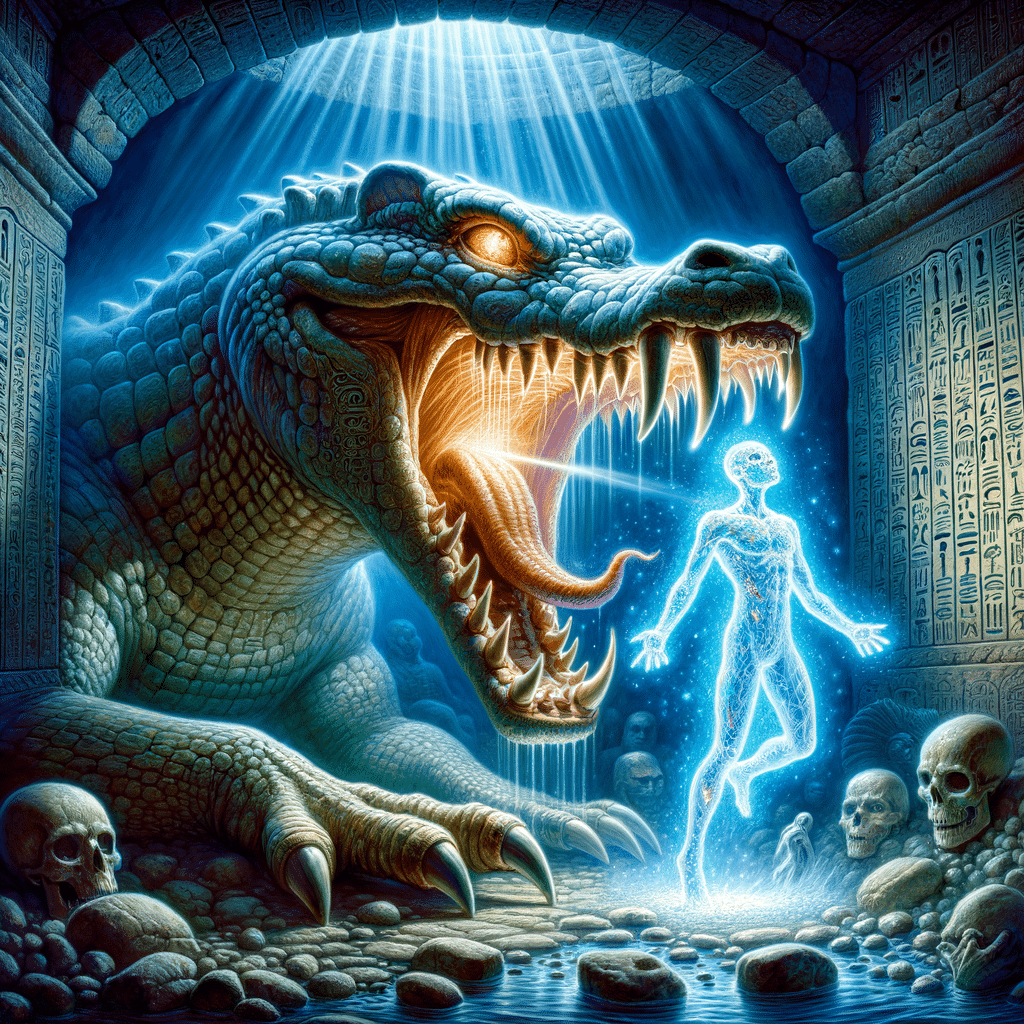
Absolutely—let’s dive into the Egyptian afterlife, one of the most intricate and awe-inspiring belief systems in the ancient world. At its heart lies the Duat (also spelled Duat, Tuat, or Duatet)—the mysterious underworld that every soul must traverse after death.
This isn’t just a journey—it’s a cosmic quest full of trials, gods, monsters, and ultimate judgment.
🌌 What Is the Duat?
The Duat is the Egyptian underworld—a realm between life and the afterlife, often described as a vast, shifting landscape of caverns, rivers, gates, deserts, and stars.
It’s not a place of eternal damnation like the Christian “hell,” but rather a transitional realm where the soul is tested and purified before potentially reaching eternal peace.
🧭 The Journey Begins: Death and the Soul’s Departure
Upon death, the ka (life force) and ba (personality) of the deceased must reunite and begin the voyage through the Duat. This journey is detailed in sacred texts like:
- The Book of the Dead
- The Amduat (Book of the Hidden Chamber)
- The Book of Gates
These books served as spiritual travel guides, often buried with the deceased, complete with spells, maps, and passwords to help navigate the underworld.
🛶 Stages of the Journey Through Duat
1. Entering the Duat
The soul enters a world of shifting landscapes: dark caves, fiery lakes, and even lush fields. This isn’t linear—it’s cyclical, mirroring the nightly journey of the sun god Ra through the underworld.
2. Meeting the Gods and Guardians
The soul encounters a host of beings:
- Anubis – jackal-headed god who oversees embalming and protects the dead.
- Thoth – records the results of the judgment.
- Ma’at – goddess of truth, balance, and cosmic order.
- Serpents, demons, and guardians – who pose riddles or trials to test worthiness.
3. The Weighing of the Heart
This is the central moment of the journey.
- The heart (believed to contain one’s conscience and deeds) is weighed against the feather of Ma’at.
- If the heart is lighter, the soul passes and joins the blessed dead in Aaru (the Field of Reeds)—a perfect version of earthly life.
- If heavier, the heart is devoured by Ammit—a terrifying chimera-like creature with a crocodile head, lion’s body, and hippo back. This results in “second death”—nonexistence.
4. Final Ascension to Aaru
Souls deemed worthy are guided by Osiris (god of the dead and resurrection) into Aaru, a paradise of peace, abundance, and eternal life—like Egypt’s Nile Valley at its most fertile.
Souls in Aaru still maintained individuality and sometimes had roles to play in divine order, but they were no longer burdened by pain, age, or sorrow.
🌄 Symbolism and Philosophy
The Egyptian view of the afterlife wasn’t just about reward or punishment. It reflected:
- Cosmic order vs. chaos (Ma’at vs. Isfet)
- The importance of living a moral life
- The belief in rebirth and renewal (as seen in the daily resurrection of Ra)
- A very earth-connected paradise, not abstract—Aaru was a glorified version of real life
✍️ Fun Facts:
- Egyptians often removed the heart during mummification—but replaced it with a heart scarab amulet inscribed with spells to pass the judgment.
- The Book of the Dead wasn’t a single book, but a customizable collection of spells (over 190 in total).
- Pharaohs and nobles had detailed tombs filled with symbolic maps and offerings to aid their journey through the Duat.
Want to walk through the Duat like a soul in judgment, or meet some of its wildest monsters and gods face to face? I can break down the journey scene by scene if you’re into it.